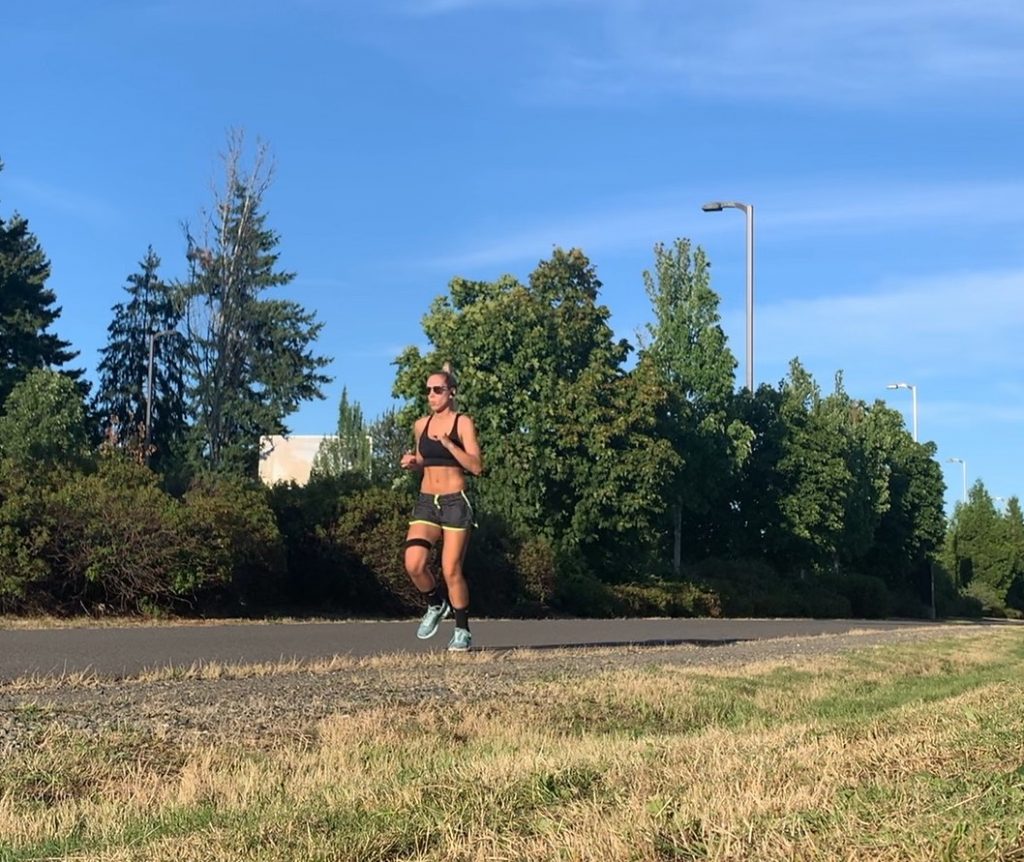To me, nothing beats a 2-3 mile run to the nearby lake in the sun. However, lately my favorite pastime has been plagued with throbbing knee pain, robbing me from my typical enjoyment. As I address the pain (IT Band Syndrome, pain on the outside of my knee) with a supportive brace and some muscle strengthening exercises, I can’t help but think, why is this problem happening to me and not my partner? Are female athletes more susceptible to certain injuries than male athletes?
As an athlete, female or male, it’s important to learn about injury prevention and be well versed in recovery techniques so we can keep our body healthy and be prepared for our next run or sporting event.
I decided to look further into the subject of female athlete injuries and discovered some interesting information on common knee-related injuries. Keep in mind, there is much uncertainty around this topic and extensive research still needs to be done.

Knee Injuries More Common for Female Athletes
Right off the bat I immediately think of all the female soccer players I know that have suffered an ACL injury. Male athletes suffer from this injury as well but it turns out females are 4-6 times more likely to experience an ACL injury than males playing the same sport. ACL injuries are especially common in soccer and basketball players. In fact, ACL injuries are so common, statistics show that 1 in 10 female collegiate athletes will suffer from an ACL injury.
Other knee injuries that are thought to be more prevalent in women include Patellofemoral Syndrome and IT Band Syndrome.
Why?
Females are at higher risk for ACL tears due to muscle strength imbalance. According to Dr. Thomas Best, a sports medicine physician at The Ohio State University Wexner Medical Center, this is due to “Women having significantly lower hamstring-to-quadriceps peak torque strength balance ratio.”
Other possible reasons why female athletes may be more susceptible to those three knee injuries include:
- Higher Estrogen levels, more body fat, and less muscle mass than males
- Muscle strength imbalances
- Greater flexibility due to looser ligaments and less powerful muscles
- More prone to Calcium and Vitamin D deficiencies
- Wider pelvis, impacting alignment of ankles and knees
Prevention Methods:
- Neuromuscular retraining
- Programs have been developed to reduce the differences between female and male athlete movement patterns during activity. Teaching athletes to control the upper body, trunk and lower body position.
- Strengthening Muscles
- Strengthening certain muscles such as hamstrings can help prevent ACL injuries. For my IT Band Syndrome I like to use Resistance Bands for working on any muscle imbalances I have. It is also a good idea to enlist the help of a professional if you need help identifying which areas to target.
- Braces/Supports
- Talk to a medical professional and determine what injury you may have. While working on resolving the root cause of the injury, it is also a good idea to wear a brace or support. This helps reduce strain to the area and can alleviate pain or discomfort during activity. For my IT Band Syndrome I wear the IT Band Compression Wrap.
- Recovery
- To help reduce the risk of injury, rest and take time to recover after training. Some popular methods of recovery include foam rolling, massage balls, hot/cold therapy and stretching. It is also important to make sure you are getting proper nutrition and enough sleep.
So is there a gender gap when it comes to sports related injuries? Unfortunately, we know little about how men and women are susceptible to particular injuries, especially about the neuromuscular differences between the genders. Extensive research still needs to be done to address this question, but certainly an increase in the recognition of a possible gap can lead to larger prevention efforts in women’s sports.

A female athlete may be just as fit (or more so) than her male athlete counterpart, yet there does seem to be different vulnerabilities between men and women for certain injuries.
To keep things fair, I will note that the last UEFA study on injury suggested that women suffer fewer breaks than men. So don’t feel too down on yourselves ladies!
Ultimately, all evidence shows us that sport and exercise are as beneficial for women as they are for men. Participating in a sport significantly improves your health and self-esteem. Unfortunately, there will always be a risk for injury, but good coaching, proper strength and conditioning, injury prevention knowledge and making time for recovery can brings the odds down.
Sources
- Pro-tecathletics.com, product & injury information
- Robert H. Shmerling, MD The Gender Gap in Sports Injuries, online publication
- Ashley Lauretta, Do Women Face Injury More Than Male Athletes?, Online Publication
- Karien Potgieter, Are Female Athletes More Prone to Sports Injuries Than Males?, Online Publication
*Editor’s Note: This article was created in partnership with Pro-Tec Athletics.














